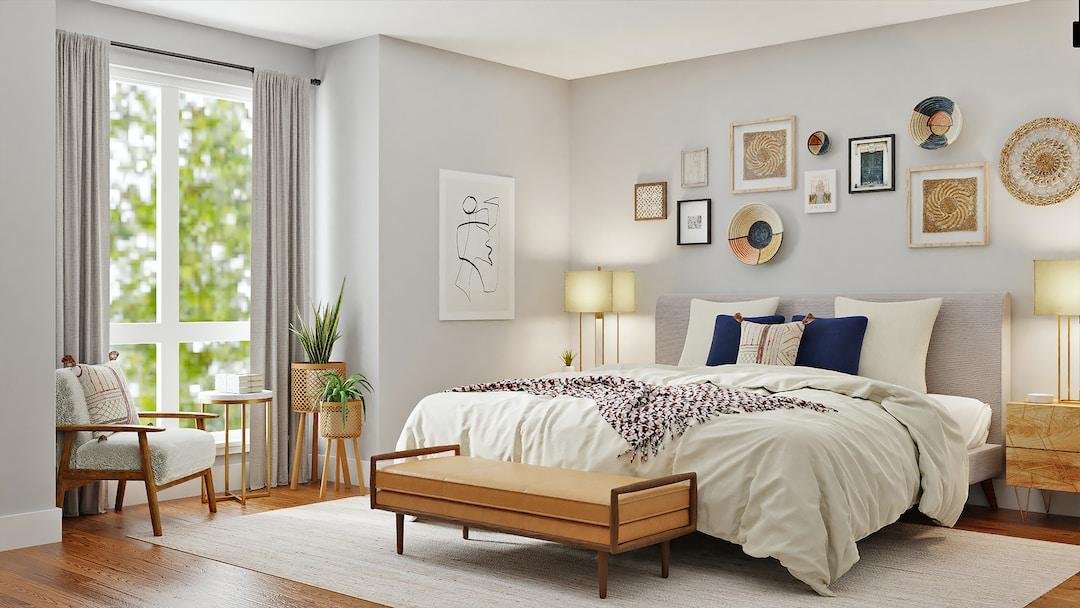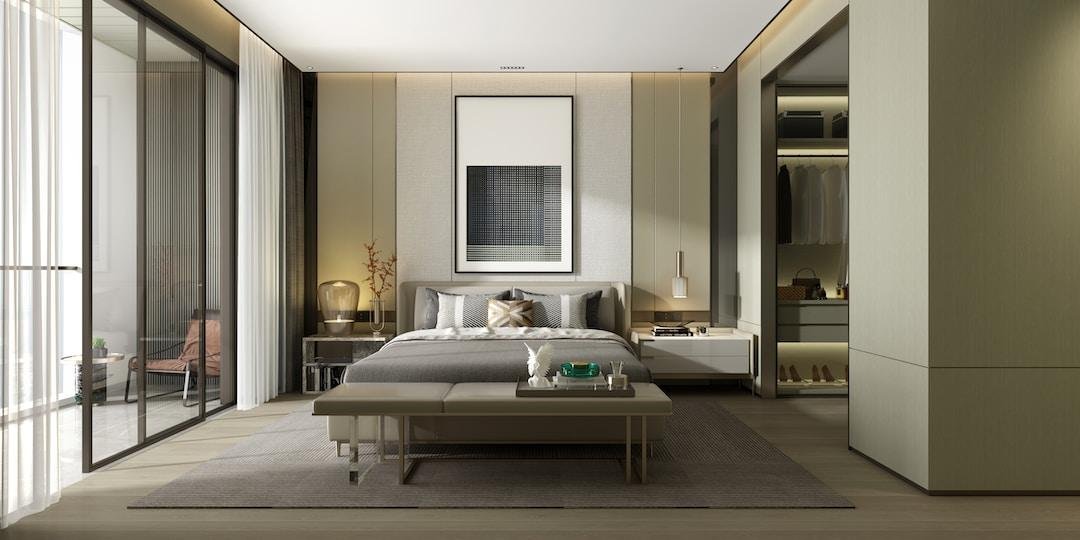Furnishing your bedroom can be a challenging yet exciting task. It requires thoughtfulness, planning, and a keen eye for design. The bedroom is a personal space that should reflect your style, provide comfort and promote relaxation. From choosing suitable furniture to selecting the appropriate color scheme, and deciding on the right type of fabrics, various elements go into creating a beautiful and functional bedroom. If you’re in need of inspiration, keep reading to discover some helpful tips and gain insights to make this process easier and enjoyable for you.
Introducing Texture and Pattern
Texture and pattern can bring a sense of warmth and depth to a bedroom. Combining different textures through materials such as fur, velvet, silk, or wool can break up the monotony of a room and create interest. For instance, a soft faux fur throw on a leather armchair can add a touch of luxury and coziness. Similarly, a rattan or wooden headboard can introduce an element of nature and a more rustic feel.
Using duvet covers can be an excellent way to add variety to your bedding, while also keeping extra blankets or quilts nicely packed away when not in use. By using a duvet cover, you can easily remove and wash it whenever needed, keeping your duvet fresh and free from dust, stains, and allergens. Furthermore, duvets come in a wide range of colors, patterns, and materials, allowing you to effortlessly change the look and feel of your bedroom.
Including patterns in your bedroom decor can make the space feel layered and dynamic. Bed linens, curtains, and rugs are places where you can easily introduce patterns to your bedroom. Try mixing and matching different designs such as stripes, plaids, botanical prints, or geometric shapes to add visual interest. However, it is important to ensure patterns remain harmonious and don’t overload the senses. Too many strong patterns together can make the room feel chaotic and unbalanced.
The Power of Color
Color has the potential to instantly transform any space. Therefore, deciding on a color scheme for your bedroom can be a big decision. The chosen color should reflect your personality and set the tone for your day. For instance, lighter shades like pale blue or cream can lend a calm and relaxed atmosphere, while darker hues like charcoal or navy can add a sense of luxury and drama to the space.
Remember, it’s not just about slapping a coat of paint on the walls. The color scheme should flow seamlessly throughout the bedroom – from the walls and ceiling to the carpeting, furniture, and even the bed linens. It is advisable to use a color wheel to understand complementary shades and create a balanced look. You might also consider using wallpaper or wall decals to introduce interesting patterns and create a unique aesthetic in your bedroom.
Also, you have to think about the lighting in the room. Natural light during the day will make colors appear differently than artificial lighting does at night. So, it is always a good idea to test out a few paint samples on your walls and observe them at different times of the day before making a decision.
Selecting the Right Furniture
The right furniture can greatly enhance both the functionality and aesthetic appeal of your bedroom. The bed is undoubtedly the most integral piece of furniture in a bedroom. Therefore, it is crucial to invest in a bed that not only suits your personal style but also provides a good night’s sleep. In addition to the bed, you might also need other pieces of furniture like a bedside table, a dressing table, a wardrobe, or perhaps even a seating area depending on the size of your bedroom.
When selecting furniture, quality should be the main criterion. Look for a trustworthy and reputable retailer. Ensure that the pieces are sturdy and long-lasting. Also, consider the maintenance requirements of the furniture. For instance, a fabric upholstered headboard would require more upkeep as compared to a wooden one. Therefore, choose furniture that suits your lifestyle and needs.
Importance of Suitable Lighting

Effective lighting is essential in a bedroom to create a cozy and relaxing atmosphere. Incorporate layers of light that serve different purposes. Ambient lighting sets the tone of the room, task lighting aids specific activities like reading or dressing, while accent lighting can highlight certain elements like decor pieces or artwork. You can achieve ambient lighting through overhead fixtures or floor lamps. For task lighting, consider bedside lamps or pendant lights.
For accent lighting, you might choose LED strip lights or spotlights. The different lighting sources should harmoniously complement each other to create a well-lit, comfortable environment. The choice of light bulbs also matters. Warm white bulbs can create a soft, relaxing glow, while cool white bulbs offer a brighter, more energizing light. Don’t forget to utilize natural lighting as well, which has practical benefits for your mental and physical health too.
The Art of Accessorizing
Accessories add the finishing touches to your bedroom decor, bringing character and personality to the space. They can range from art pieces, mirrors, and photo frames to throw pillows, rugs, and decor objects. Each accessory should complement the decor of the room, reflect your personal style, and add warmth and comfort.
Art pieces and family photos can give your walls a personal touch and make the room feel more homely. Mirrors as well do not only serve as functional items, but they can also make a room appear larger and brighter by reflecting light. Throw pillows and rugs, on the other hand, add softness and coziness to your room. They are also an easy way to introduce color, texture, and pattern to your bedroom decor.
Creating a Harmonious Design

Last but not least, creating a harmonious design is fundamental. All elements of your bedroom decor should blend well together to create a unified look. This requires careful planning and thoughtful decision-making. You might find the concept of a mood board helpful. Collect images, color swatches, fabric samples, and pictures of furniture or decor items that you like. Arrange them on a board to see how they look together and to get an idea of the style you hope to achieve.
Always consider the space available and the scale of the furniture and accessories. A king-size bed might seem appealing, but will it leave enough space for other furniture or for you to move around? Similarly, a huge chandelier might appear grand, but will it overwhelm the space? Aim for balance and think of creating a room that is visually pleasing from every angle.
While following trends can be appealing, remember that your bedroom is a personal space that should reflect your style and personality. Choose pieces that you love and that make you feel comfortable. After all, your bedroom should be a sanctuary that you look forward to retreating to after a long day.
Your bedroom is not just a place where you sleep; it is your personal sanctuary, a space where you can relax, rejuvenate, and recharge. It is necessary to invest time, effort, and money into creating a bedroom that reflects your personality and meets your needs. Furthermore, your bedroom is a reflection of your personal style and taste. When designing your ideal bedroom, you are putting together a space that is uniquely yours and that you can enjoy for years to come.


